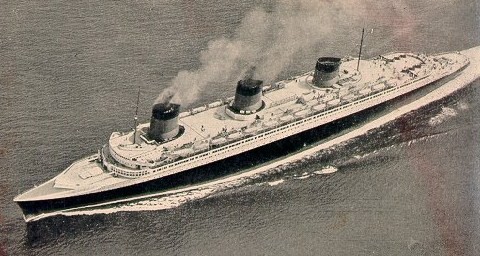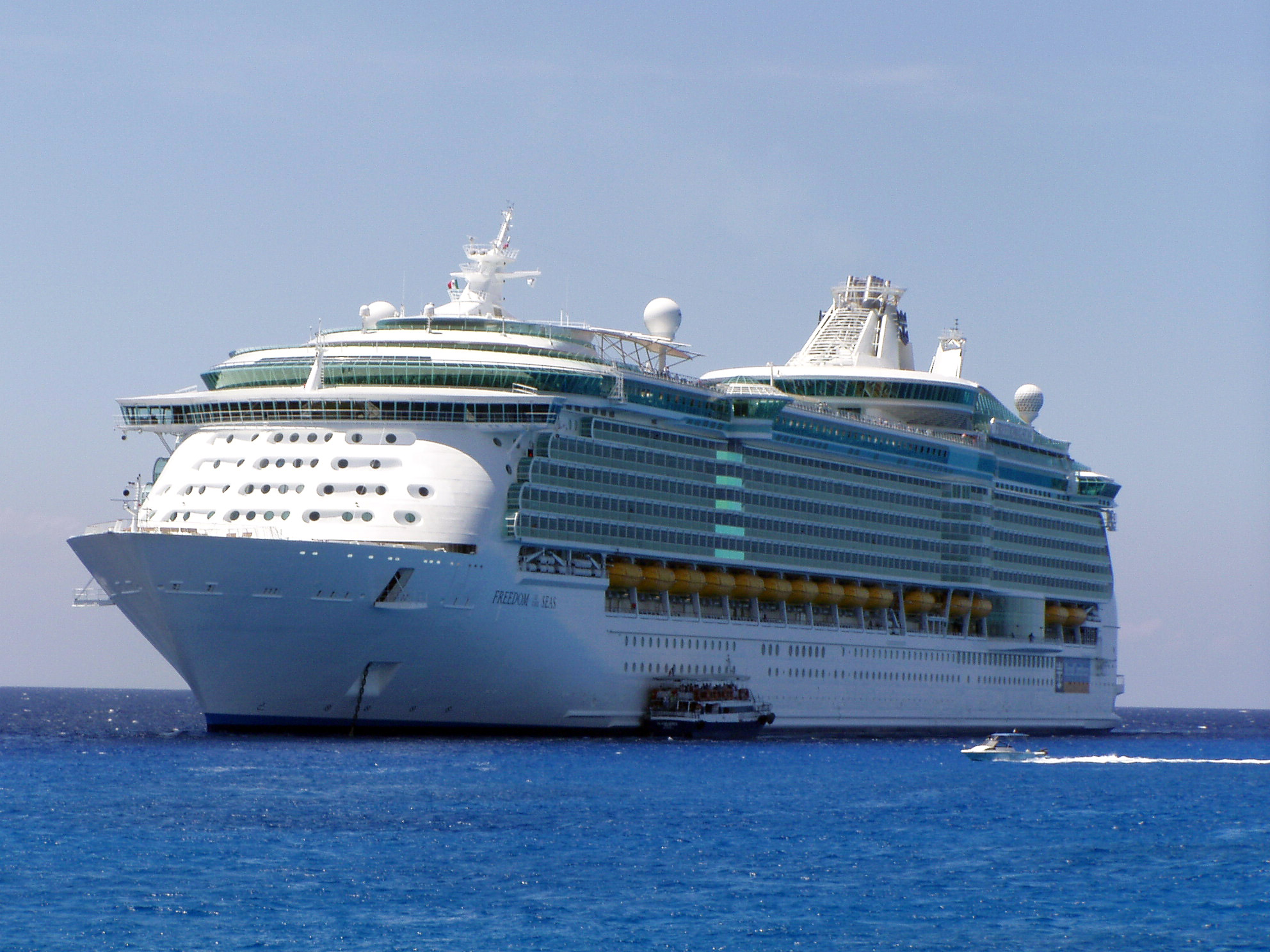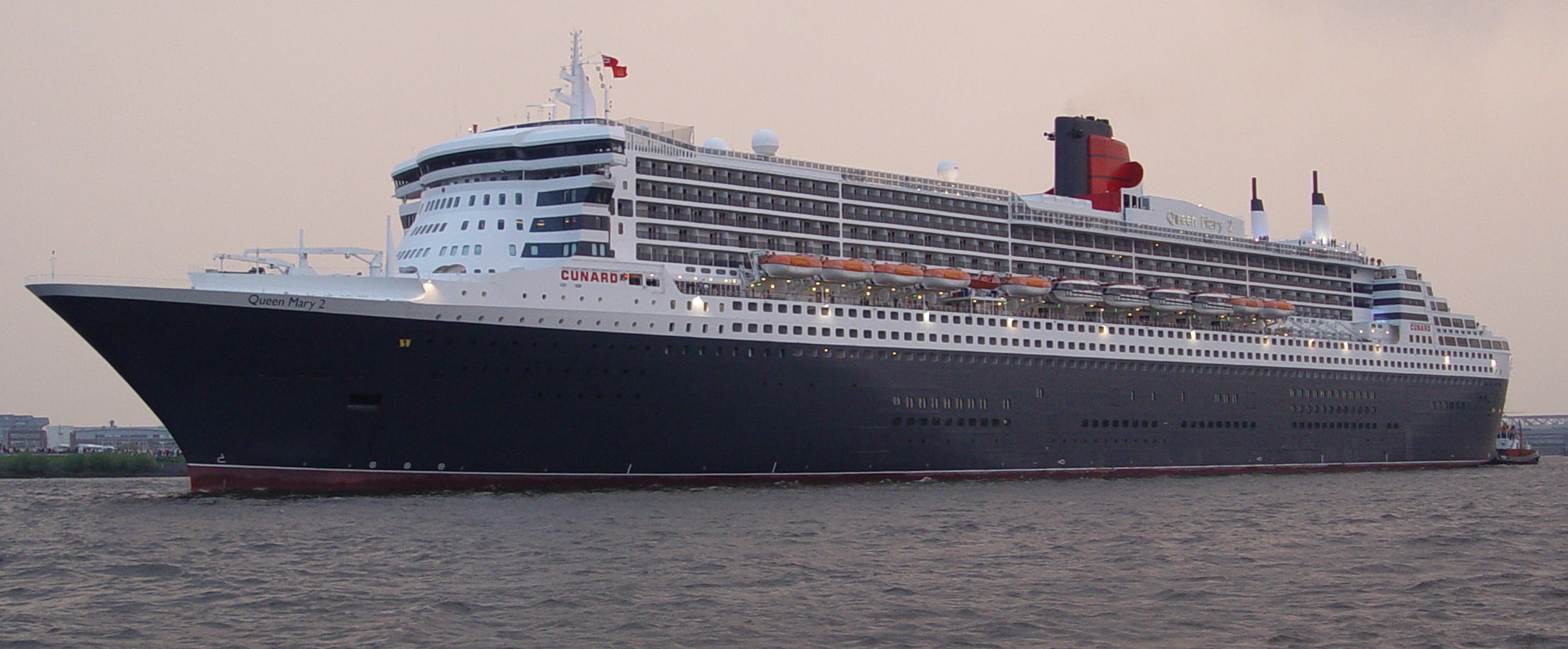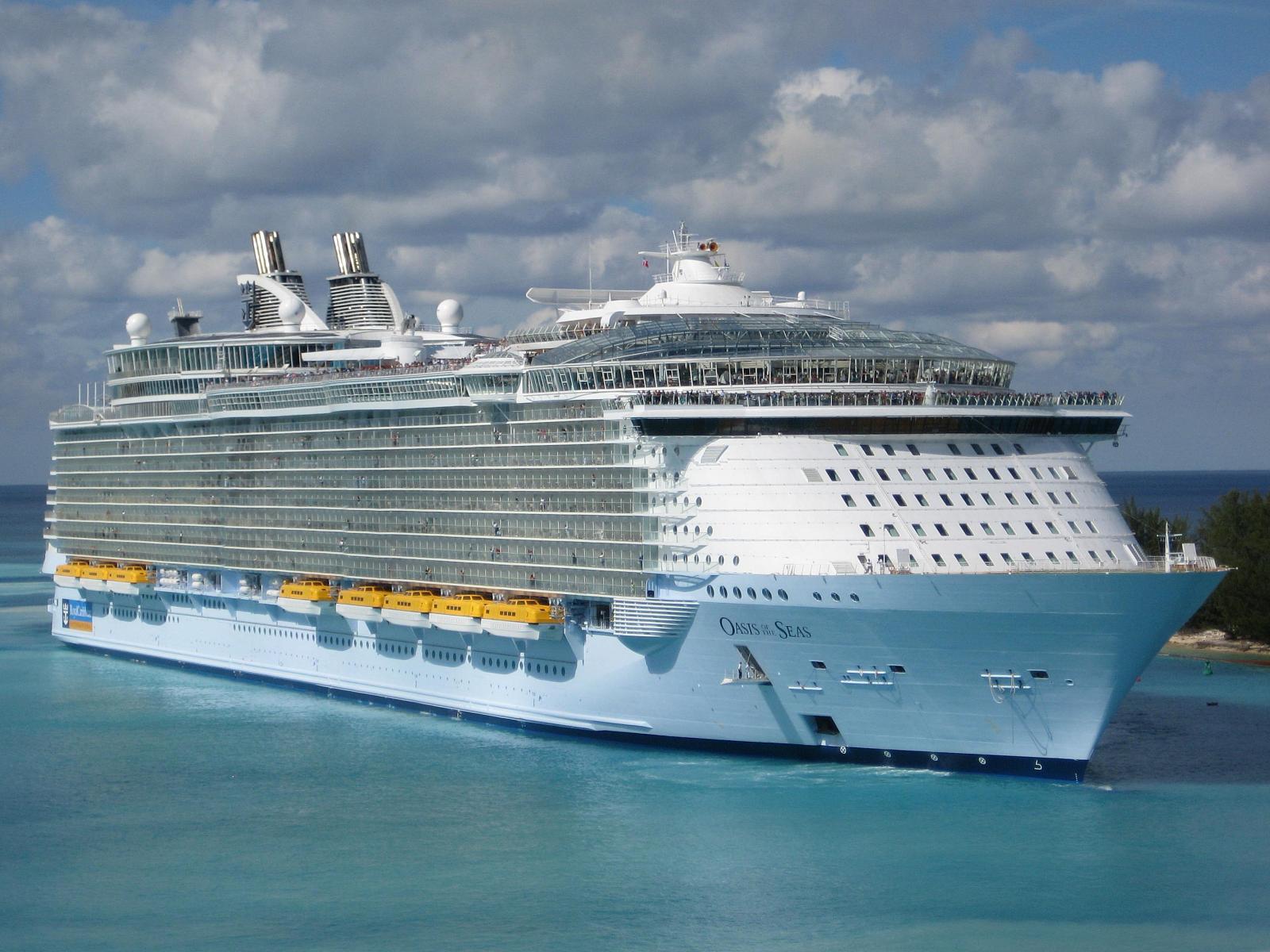Passenger Ship on:
[Wikipedia]
[Google]
[Amazon]
 A passenger ship is a
A passenger ship is a


 ''Passenger Ship Types:'' Passenger ships include
''Passenger Ship Types:'' Passenger ships include
 #
#

 Because of changes in historic measurement systems, it is difficult to make meaningful and accurate comparisons of ship sizes. Historically, gross register tonnage (GRT) was a measure of the internal volume of certain enclosed areas of a ship divided into "tons" equivalent to of space. Gross tonnage (GT) is a comparatively new measure, adopted in 1982 to replace GRT. It is calculated based on "the moulded volume of all enclosed spaces of the ship", and is used to determine things such as a ship's manning regulations, safety rules, registration fees, and port dues. It is produced by a mathematical formula, and does not distinguish between mechanical and passenger spaces, and thus is not directly comparable to historic GRT measurements.
Because of changes in historic measurement systems, it is difficult to make meaningful and accurate comparisons of ship sizes. Historically, gross register tonnage (GRT) was a measure of the internal volume of certain enclosed areas of a ship divided into "tons" equivalent to of space. Gross tonnage (GT) is a comparatively new measure, adopted in 1982 to replace GRT. It is calculated based on "the moulded volume of all enclosed spaces of the ship", and is used to determine things such as a ship's manning regulations, safety rules, registration fees, and port dues. It is produced by a mathematical formula, and does not distinguish between mechanical and passenger spaces, and thus is not directly comparable to historic GRT measurements.
WorldCruise-Network.com 8 September 2010, accessed February 25, 2013 After October 1, 2010, the International Convention for the Safety of Life at Sea (SOLAS) requires passenger ships operating in international waters must either be constructed or upgraded to exclude combustible materials. It is believed some owners and operators of ships built before 1980, which are required to upgrade or retire their vessels, will be unable to conform to the regulations. Fred. Olsen Cruise Line's , built in 1966 was one such ship, but was reported to be headed for inter-island service in Venezuelan waters.
 A passenger ship is a
A passenger ship is a merchant ship
A merchant ship, merchant vessel, trading vessel, or merchantman is a watercraft that transports cargo or carries passengers for hire. This is in contrast to pleasure craft, which are used for personal recreation, and naval ships, which are ...
whose primary function is to carry passengers on the sea. The category does not include cargo vessels which have accommodations for limited numbers of passengers, such as the ubiquitous twelve-passenger freighters once common on the seas in which the transport of passengers is secondary to the carriage of freight. The type does however include many classes of ships designed to transport substantial numbers of passengers as well as freight. Indeed, until recently virtually all ocean liner
An ocean liner is a type of passenger ship primarily used for transportation across seas or oceans. Ocean liners may also carry cargo or mail, and may sometimes be used for other purposes (such as for pleasure cruises or as hospital ships). The ...
s were able to transport mail, package freight and express, and other cargo in addition to passenger luggage, and were equipped with cargo holds and derricks, kingposts, or other cargo-handling gear for that purpose. Only in more recent ocean liners and in virtually all cruise ship
Cruise ships are large passenger ships used mainly for vacationing. Unlike ocean liners, which are used for transport, cruise ships typically embark on round-trip voyages to various ports of call, where passengers may go on Tourism, tours k ...
s has this cargo capacity been eliminated.
While typically passenger ships are part of the merchant marine, passenger ships have also been used as troopships and often are commissioned as naval ships when used as for that purpose.
Description


ferries
A ferry is a boat or ship that transports passengers, and occasionally vehicles and cargo, across a body of water. A small passenger ferry with multiple stops, like those in Venice, Italy, is sometimes referred to as a water taxi or water bus.
...
, which are vessels for day to day or overnight short-sea trips moving passengers and vehicles (whether road or rail); ocean liner
An ocean liner is a type of passenger ship primarily used for transportation across seas or oceans. Ocean liners may also carry cargo or mail, and may sometimes be used for other purposes (such as for pleasure cruises or as hospital ships). The ...
s, which typically are passenger or passenger-cargo vessels transporting passengers and often cargo on longer line voyages; and cruise ship
Cruise ships are large passenger ships used mainly for vacationing. Unlike ocean liners, which are used for transport, cruise ships typically embark on round-trip voyages to various ports of call, where passengers may go on Tourism, tours k ...
s, which often transport passengers on round-trips, in which the trip itself and the attractions of the ship and ports visited are the principal draw.
There are several main types:
# Cruise ship
Cruise ships are large passenger ships used mainly for vacationing. Unlike ocean liners, which are used for transport, cruise ships typically embark on round-trip voyages to various ports of call, where passengers may go on Tourism, tours k ...
s
# Ferries
A ferry is a boat or ship that transports passengers, and occasionally vehicles and cargo, across a body of water. A small passenger ferry with multiple stops, like those in Venice, Italy, is sometimes referred to as a water taxi or water bus.
...
# Ocean liner
An ocean liner is a type of passenger ship primarily used for transportation across seas or oceans. Ocean liners may also carry cargo or mail, and may sometimes be used for other purposes (such as for pleasure cruises or as hospital ships). The ...
s
Passenger ship types
Cruise ship
Cruise ships are large passenger ships used mainly for vacationing. Unlike ocean liners, which are used for transport, cruise ships typically embark on round-trip voyages to various ports of call, where passengers may go on Tourism, tours k ...
s: For a long time, cruise ships were smaller than the old ocean liners had been, but in the 1980s, this changed when Knut Kloster, the director of Norwegian Caribbean Lines, bought one of the biggest surviving liners, the , and transformed her into a huge cruise ship, which he renamed the SS ''Norway''. Her success demonstrated that there was a market for large cruise ships. Successive classes of ever-larger ships were ordered, until the Cunard liner was finally dethroned from her 56-year reign as the largest passenger ship ever built (a dethronement that led to numerous further dethronements from the same position).
# Ferries
A ferry is a boat or ship that transports passengers, and occasionally vehicles and cargo, across a body of water. A small passenger ferry with multiple stops, like those in Venice, Italy, is sometimes referred to as a water taxi or water bus.
...
: They are vessels for day to day or overnight short-sea trips moving passengers and vehicles (whether road or rail). There also exist Cruise ferries, designed for longer routes, lasting from one to a couple of days. They are named such because they tend to include amenities common on cruise ships (pools, discos, spas, etc...)
# Ocean liner
An ocean liner is a type of passenger ship primarily used for transportation across seas or oceans. Ocean liners may also carry cargo or mail, and may sometimes be used for other purposes (such as for pleasure cruises or as hospital ships). The ...
s: An ocean liner is the traditional form of passenger ship. Once such liners operated on scheduled line voyages to all inhabited parts of the world. With the advent of airliners transporting passengers and specialized cargo vessels hauling freight, line voyages have almost died out. But with their decline came an increase in sea trips for pleasure and fun, and in the latter part of the 20th century ocean liners gave way to cruise ships as the predominant form of large passenger ship containing from hundreds to thousands of people, with the main area of activity changing from the North Atlantic Ocean to the Caribbean Sea
The Caribbean Sea is a sea of the Atlantic Ocean, North Atlantic Ocean in the tropics of the Western Hemisphere, located south of the Gulf of Mexico and southwest of the Sargasso Sea. It is bounded by the Greater Antilles to the north from Cuba ...
.
Cruise ships vs. ocean liners
Although some ships have characteristics of both types, the design priorities of the two forms are different: ocean liners value speed and traditional luxury while cruise ships value amenities (swimming pools, theaters, ball rooms, casinos, sports facilities, etc.) rather than speed. These priorities produce different designs. In addition, ocean liners typically were built to cross theAtlantic Ocean
The Atlantic Ocean is the second largest of the world's five borders of the oceans, oceanic divisions, with an area of about . It covers approximately 17% of Earth#Surface, Earth's surface and about 24% of its water surface area. During the ...
between Europe and the United States
The United States of America (USA), also known as the United States (U.S.) or America, is a country primarily located in North America. It is a federal republic of 50 U.S. state, states and a federal capital district, Washington, D.C. The 48 ...
or travel even further to South America or Asia while cruise ships typically serve shorter routes with more stops along coastlines or among various islands.
Both the (''QE2'') (1969) and her successor as Cunard's flagship
A flagship is a vessel used by the commanding officer of a group of navy, naval ships, characteristically a flag officer entitled by custom to fly a distinguishing flag. Used more loosely, it is the lead ship in a fleet of vessels, typically ...
(''QM2''), which entered service in 2004, are of hybrid construction. Like transatlantic ocean liners, they are fast ships and strongly built to withstand the rigors of the North Atlantic in line voyage service, but both ships are also designed to operate as cruise ships, with the amenities expected in that trade. ''QM2'' was superseded by the of the Royal Caribbean line as the largest passenger ship ever built; however, ''QM2'' still hold the record for the largest ocean liner. The ''Freedom of the Seas'' was superseded by the in October 2009.
Measures of size

 Because of changes in historic measurement systems, it is difficult to make meaningful and accurate comparisons of ship sizes. Historically, gross register tonnage (GRT) was a measure of the internal volume of certain enclosed areas of a ship divided into "tons" equivalent to of space. Gross tonnage (GT) is a comparatively new measure, adopted in 1982 to replace GRT. It is calculated based on "the moulded volume of all enclosed spaces of the ship", and is used to determine things such as a ship's manning regulations, safety rules, registration fees, and port dues. It is produced by a mathematical formula, and does not distinguish between mechanical and passenger spaces, and thus is not directly comparable to historic GRT measurements.
Because of changes in historic measurement systems, it is difficult to make meaningful and accurate comparisons of ship sizes. Historically, gross register tonnage (GRT) was a measure of the internal volume of certain enclosed areas of a ship divided into "tons" equivalent to of space. Gross tonnage (GT) is a comparatively new measure, adopted in 1982 to replace GRT. It is calculated based on "the moulded volume of all enclosed spaces of the ship", and is used to determine things such as a ship's manning regulations, safety rules, registration fees, and port dues. It is produced by a mathematical formula, and does not distinguish between mechanical and passenger spaces, and thus is not directly comparable to historic GRT measurements. Displacement
Displacement may refer to:
Physical sciences
Mathematics and physics
*Displacement (geometry), is the difference between the final and initial position of a point trajectory (for instance, the center of mass of a moving object). The actual path ...
, a measure of mass, is not commonly used for passenger vessels. While a high displacement can indicate better sea keeping abilities, gross tonnage is promoted as the most important measure of size for passenger vessels, as the ratio of gross tonnage per passenger – the Passenger/Space Ratio – gives a sense of the spaciousness of a ship, an important consideration in cruise liners where the onboard amenities are of high importance.
Historically, a ship's GRT and displacement were somewhat similar in number. For example, ''Titanic'', put in service in 1912, had a GRT of 46,328 and a displacement reported at over 52,000 tons. Similarly, Cunard Line's mid-1930s and RMS ''Queen Elizabeth'' were of approximately 81,000 – 83,000 GRT and had displacements of over 80,000 tons.
Today, due to changes in construction, engineering, function, architecture, and, crucially, measurement system – which measures functionally all of a ship's internal volume, not just part of it – modern passenger ships' GT values are much higher than their displacements. The Cunard Queens' current successor, the 148,528 GT ''Queen Mary 2'', has been estimated to only displace approximately 76,000 tons. With the completion in 2009 of the first of the over 225,000 GT cruise ships, ''Oasis of the Seas'', passenger ships' displacements rose to 100,000 tons, well less than half their GT.
This new class is characteristic of an explosive growth in gross tonnage, which has more than doubled from the largest cruise ships of the late 1990s. This reflects the much lower relative weight of enclosed space in the comparatively light superstructure
A superstructure is an upward extension of an existing structure above a baseline. This term is applied to various kinds of physical structures such as buildings, bridges, or ships.
Aboard ships and large boats
On water craft, the superstruct ...
of a ship versus its heavily reinforced and machinery-laden hull space, as cruise ships have grown slab-sided vertically from their maximum beam to accommodate more passengers within a given hull size.
Safety regulations
Passenger ships are subject to two majorInternational Maritime Organization
The International Maritime Organization (IMO; ; ) is a List of specialized agencies of the United Nations, specialized agency of the United Nations responsible for regulating maritime transport. The IMO was established following agreement at a ...
requirements : to perform '' musters of the passengers (...) within 24 hours after their embarkation'' and to be able to perform full abandonment ''within a period of 30 minutes from the time the abandon-ship signal is given''.
Transportation Research Board research from 2019 reported passenger vessels, much more than freight vessels, are subject to degradations in stability as a result of increases in lightship weight. Passenger vessels appear to be more pressing candidates for lightship weight-tracking programs than freight vessels.
Design considerations
Passengers on ships without backup generators suffer substantial distress due to lack of water, refrigeration, and sewage systems in the event of loss of the main engines or generators due to fire or other emergency. Power is also unavailable to the crew of the ship to operate electrically powered mechanisms. Lack of an adequate backup system to propel the ship can, in rough seas, render it dead in the water and result in loss of the ship. The 2006 Revised Passenger Ship Safety Standards address these issues, and others, requiring that ships ordered after July, 2010 conform to safe return to port regulations; however, as of 2013 many ships remain in service which lack this capacity."Hidden Depths of SOLAS"WorldCruise-Network.com 8 September 2010, accessed February 25, 2013 After October 1, 2010, the International Convention for the Safety of Life at Sea (SOLAS) requires passenger ships operating in international waters must either be constructed or upgraded to exclude combustible materials. It is believed some owners and operators of ships built before 1980, which are required to upgrade or retire their vessels, will be unable to conform to the regulations. Fred. Olsen Cruise Line's , built in 1966 was one such ship, but was reported to be headed for inter-island service in Venezuelan waters.
External safety measures
The International Ice Patrol was formed in 1914 after the sinking of the ''Titanic'' to address the long-outstanding issue oficeberg
An iceberg is a piece of fresh water ice more than long that has broken off a glacier or an ice shelf and is floating freely in open water. Smaller chunks of floating glacially derived ice are called "growlers" or "bergy bits". Much of an i ...
collision.
Other regulations
Passengers and their luggage at sea are covered by the Athens Convention.Notes
References
*Durand, Jean-François. ''Autour du Monde Paquebots: Cruise Ships Around the World''. Editions marines, 1996. ilingual text*Marin, Pierre-Henri. ''Les paquebots, ambassadeurs des mers'', collection " Découvertes Gallimard " (nº 75), série Techniques. Paris: Gallimard, 1990.External links
{{DEFAULTSORT:Passenger Ship Ship types